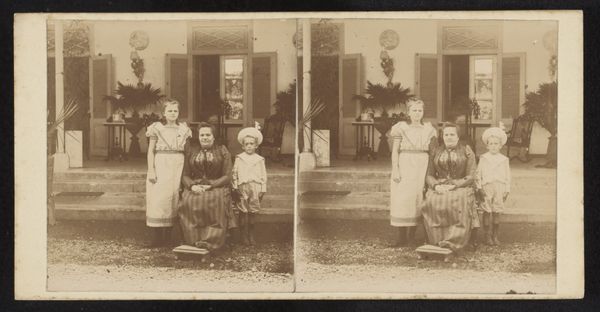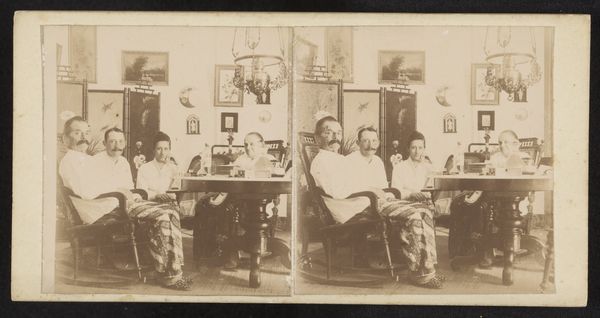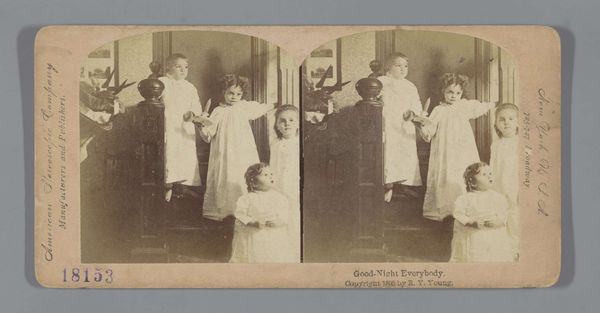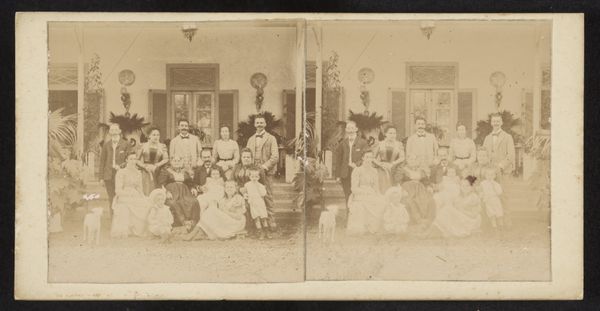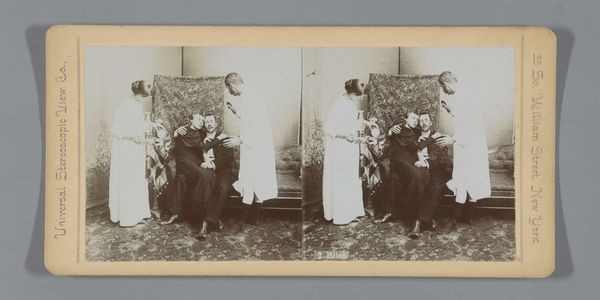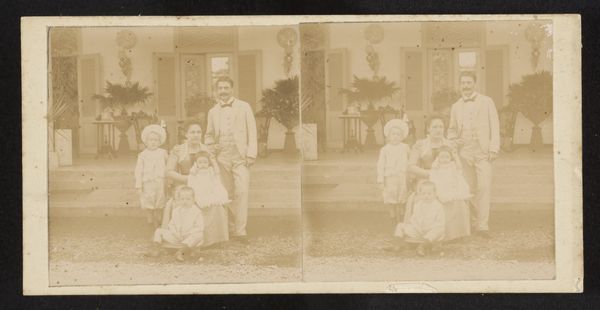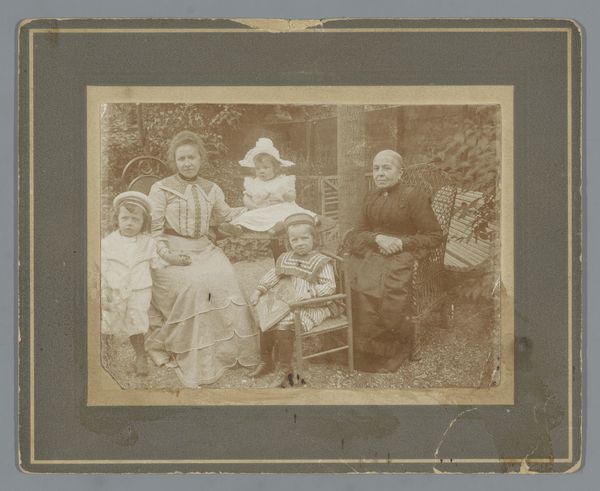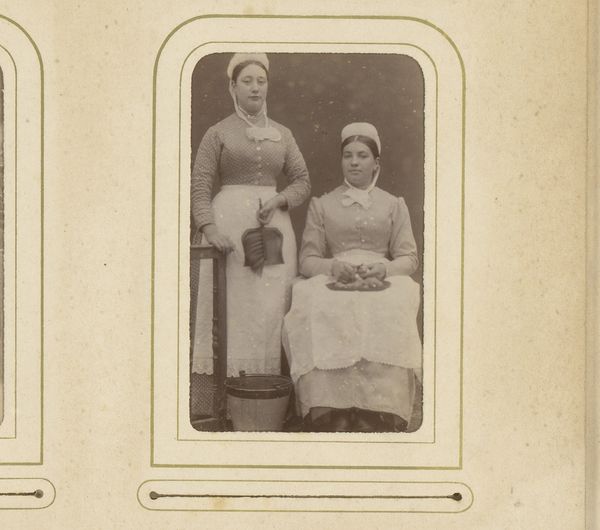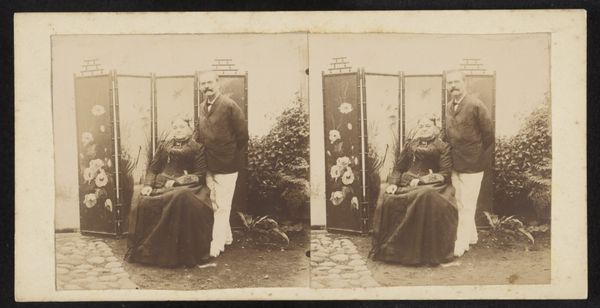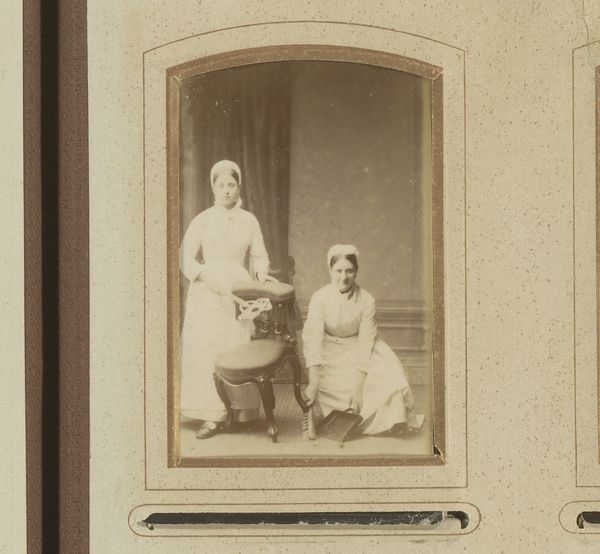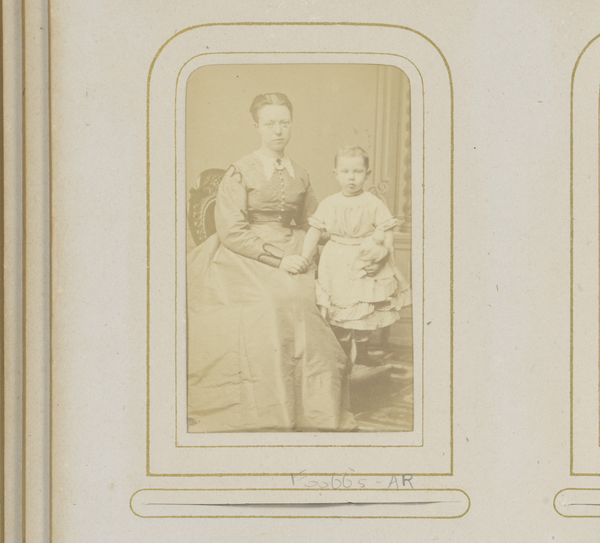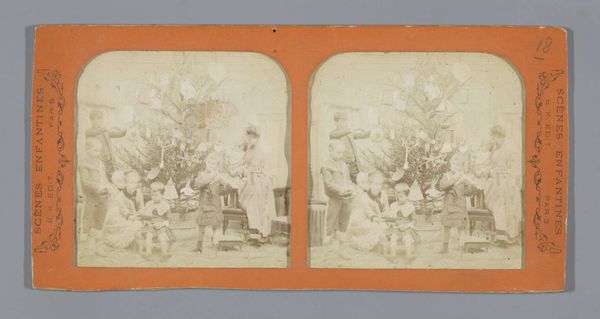
photography
#
portrait
#
still-life-photography
#
photography
#
19th century
#
realism
Dimensions: height 80 mm, width 80 mm, height 88 mm, width 178 mm
Copyright: Rijks Museum: Open Domain
Editor: This is a stereo photograph, "Familieportret" by Robert Julius Boers, created sometime between 1900 and 1922. The sepia tones give it a strong sense of history. I’m struck by the artificiality of the setting. What story can you tell me about it? Curator: It’s important to understand how photographic processes were evolving at this time. Stereographs like this were mass-produced. Think about the labor involved – from the darkroom technicians to the sales force marketing these images. The “art” is almost beside the point. The real story lies in its materiality and circulation. Editor: So you're saying that we should be focusing less on the aesthetic qualities and more on how it was made and distributed? Curator: Exactly! Consider the context. These images were often created as a means to make art more accessible. So how did that goal play out in reality? Who had access, and what kinds of subjects were being prioritized in the distribution of photographic images? Editor: That makes sense. It feels like looking at it that way takes away the "specialness" of it. Were stereographs typically a high-end product? Curator: Initially they were a signifier of technological advancement. Later on, they were very common. These portraits provided a window into another time, place, and reality, to be enjoyed by many different viewers across varied locations. The exotic background speaks to this trend too. Did all consumers have the means of critically evaluating and interpreting its cultural or social nuances? Probably not. What are your thoughts on this? Editor: That's a good point! So, what looks like a quaint family portrait is really a piece of industrial production and early globalization. I never would have considered all the workers behind the camera! Curator: Precisely. By understanding its materiality and its context within systems of production, circulation and consumption, we move away from purely aesthetic readings, uncovering more profound narratives about society and labor at the turn of the century.
Comments
No comments
Be the first to comment and join the conversation on the ultimate creative platform.
